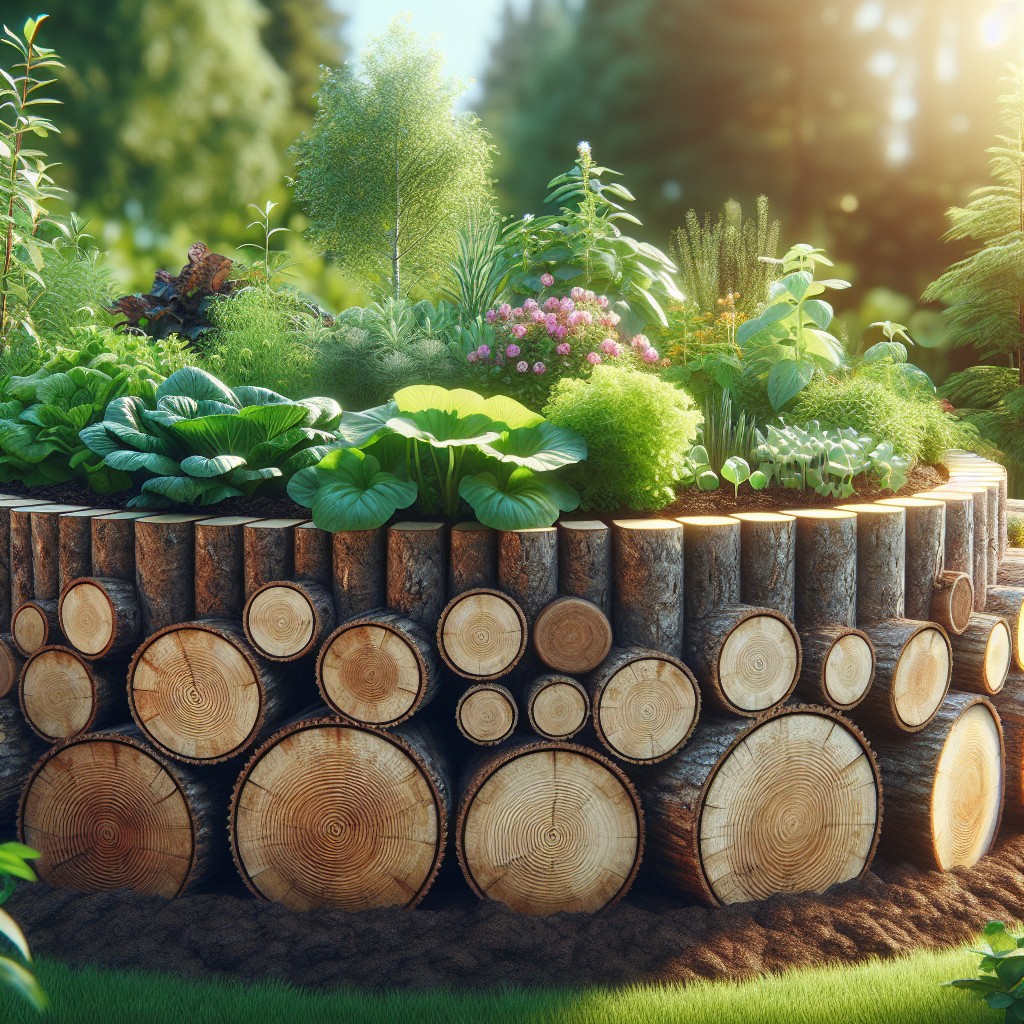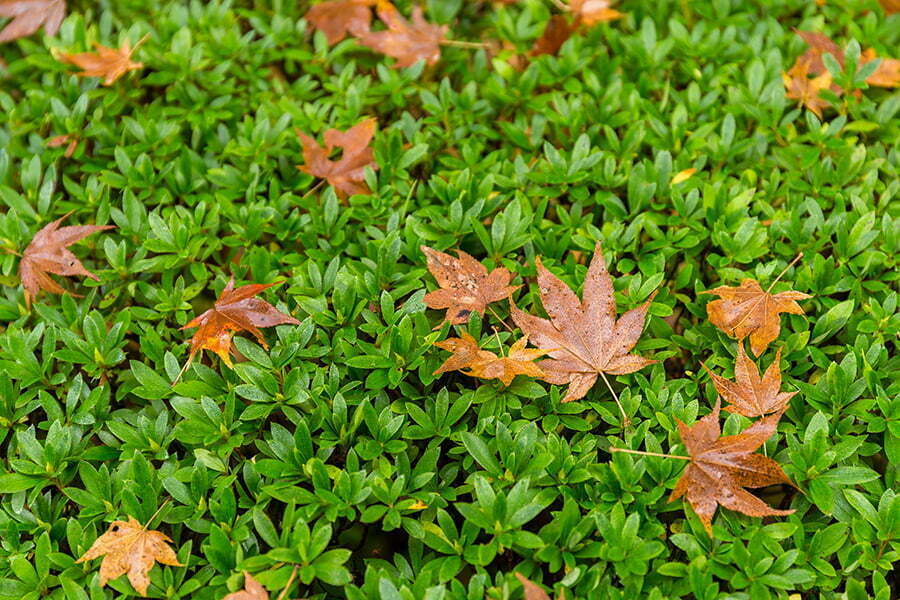Last updated on
Discover the amazing world of eco-friendly alternatives to traditional fertilizers and transform your garden into a sustainable haven with these innovative solutions.
Are you tired of spending a fortune on fertilizers for your plants? Do you want to find alternative ways to nourish your garden without breaking the bank? Look no further! In this article, we will explore some creative and budget-friendly options that can help you achieve a thriving garden without relying on expensive fertilizers. From natural compost to DIY plant food, we have got you covered.
So, let’s dive in and discover some exciting alternatives to fertilizer!
Organic Composting
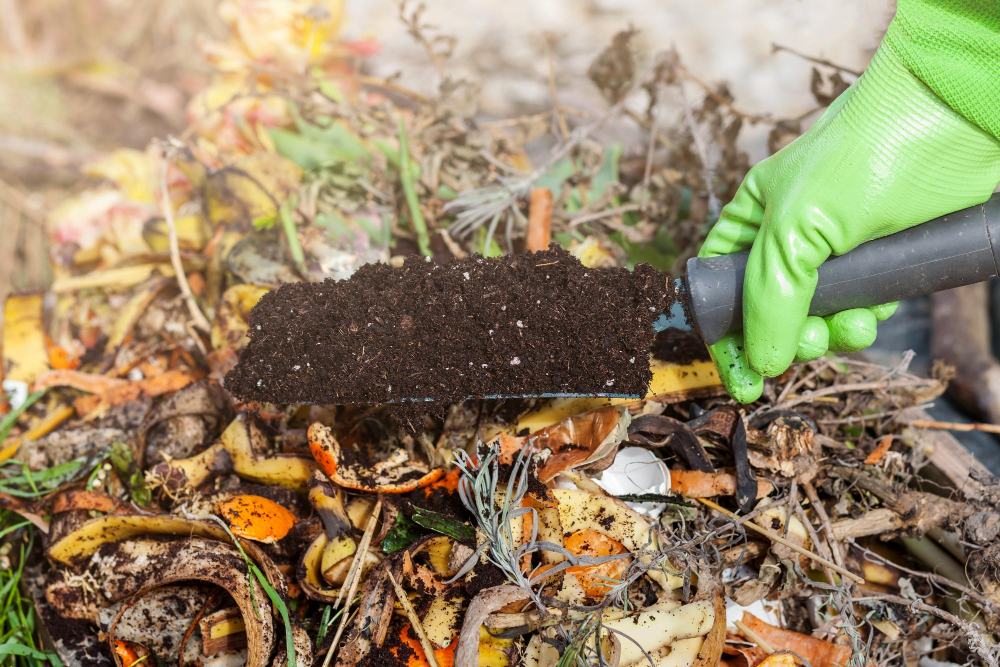
Organic composting is a natural and cost-effective way to enrich your soil with essential nutrients. It involves the decomposition of organic matter, such as food scraps, leaves, grass clippings, and other plant-based materials.
The process of composting creates a nutrient-rich soil amendment that can improve the health and productivity of your garden plants.
To start organic composting at home, you will need a bin or container to hold the materials. You can purchase one from a gardening store or make one yourself using recycled materials like wooden pallets or plastic containers.
Once you have your bin set up in an appropriate location (preferably in partial shade), begin adding layers of brown material (such as dried leaves) and green material (like kitchen scraps). Make sure to add water periodically to keep it moist but not too wet.
Over time, microorganisms will break down the organic matter into rich humus that can be added directly into garden beds or used as potting mix for indoor plants.
Vermicomposting Techniques

This process involves using worms to break down organic matter, such as fruit and vegetable peels, coffee grounds, and eggshells. The resulting vermicompost is an excellent source of nutrients for plants and can help improve soil structure.
To start vermicomposting at home, you will need a worm bin or container that allows air circulation but prevents light from entering. You can purchase pre-made bins or make one yourself using materials like plastic containers or wooden boxes.
Once you have your bin set up, add bedding material such as shredded newspaper or cardboard along with some moistened soil to create a suitable environment for the worms. Then add food scraps on top of the bedding layer before covering them with another layer of moistened bedding material.
It’s important not to overfeed the worms; otherwise, it may lead to unpleasant odors in the bin due to rotting food waste. A general rule of thumb is adding about half-pound (225 grams) per square foot (0.09 square meters) every week until they adjust their feeding habits accordinglly.
With proper care and maintenance – keeping moisture levels consistent by misting water when necessary- vermiculture systems are low-maintenance solutions that produce high-quality compost while reducing household waste sent off-site.
Animal Manure Management
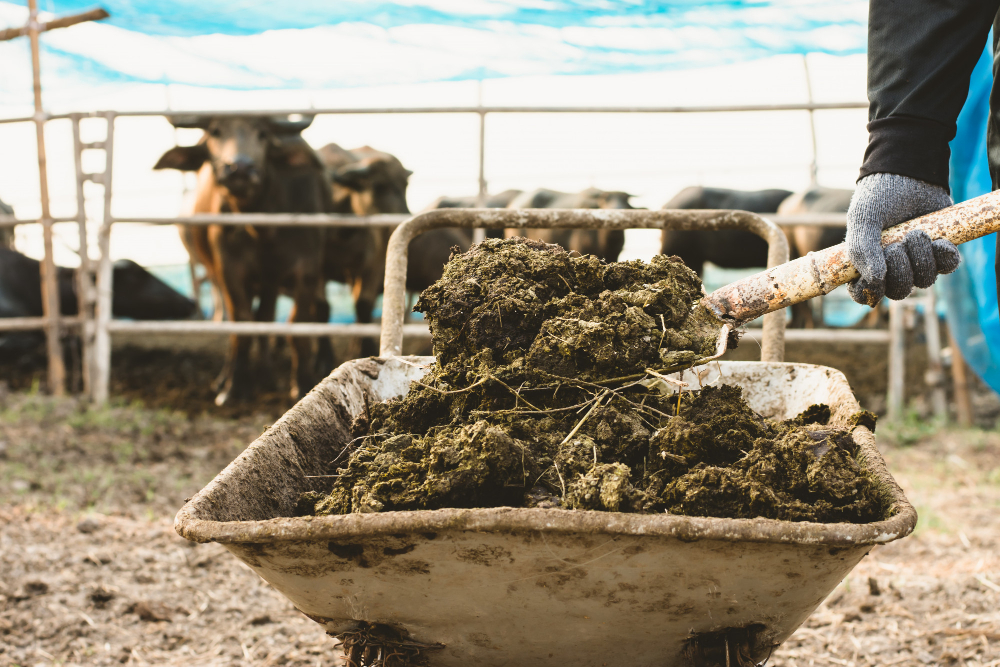
If you have access to animal waste, such as cow dung or chicken droppings, you can use them as organic fertilizers for your garden. However, before applying the manure directly on your plants or soil, make sure that it has been composted well and aged properly.
Composting animal waste involves mixing it with other organic materials like straw or leaves in a designated area and allowing the mixture to decompose over time. This process not only reduces the volume of waste but also kills harmful pathogens and weed seeds that may be present in raw manure.
Once the composting process is complete (which usually takes several months), you can apply this nutrient-rich material onto your garden beds as an excellent soil conditioner. Animal manures are high in nitrogen content which makes them ideal for leafy greens like lettuce or spinach.
Green Manures
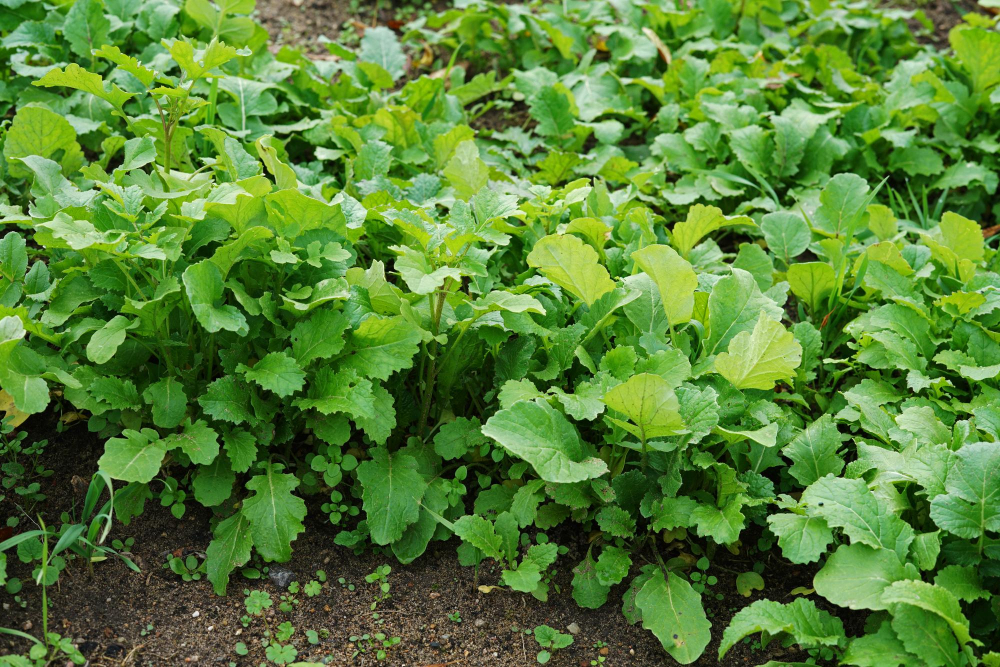
These are crops that you grow specifically to be turned into the soil, where they decompose and release nutrients back into the earth. Green manures can also help suppress weeds, prevent erosion, and attract beneficial insects.
Some popular green manure crops include clover, alfalfa, rye grasses or oats. Legumes such as peas or beans can fix nitrogen in your garden’s soil which is essential for plant growth.
To use green manure effectively in your garden bed: sow seeds thickly over bare ground after harvesting vegetables; allow them to grow until just before flowering when they should be cut down with shears; leave clippings on top of beds so that they will break down naturally over time releasing their nutrients back into the earth.
Cover Crops for Nutrient Retention
These crops are planted between growing seasons, and they help prevent soil erosion, suppress weeds, and add organic matter to the soil. Cover crops also have a unique ability to absorb excess nutrients from the ground before they leach into groundwater or runoff into nearby water bodies.
Some popular cover crop options include legumes such as clover or vetch that fix nitrogen in the soil while others like rye grass scavenge for leftover nitrogen after harvests. Other examples of nutrient-rich cover crops include buckwheat which is known for its phosphorus uptake abilities; oats which can accumulate potassium; radish with its deep taproot system that helps break up compacted soils while scavenging calcium among other minerals.
Crop Rotation Benefits
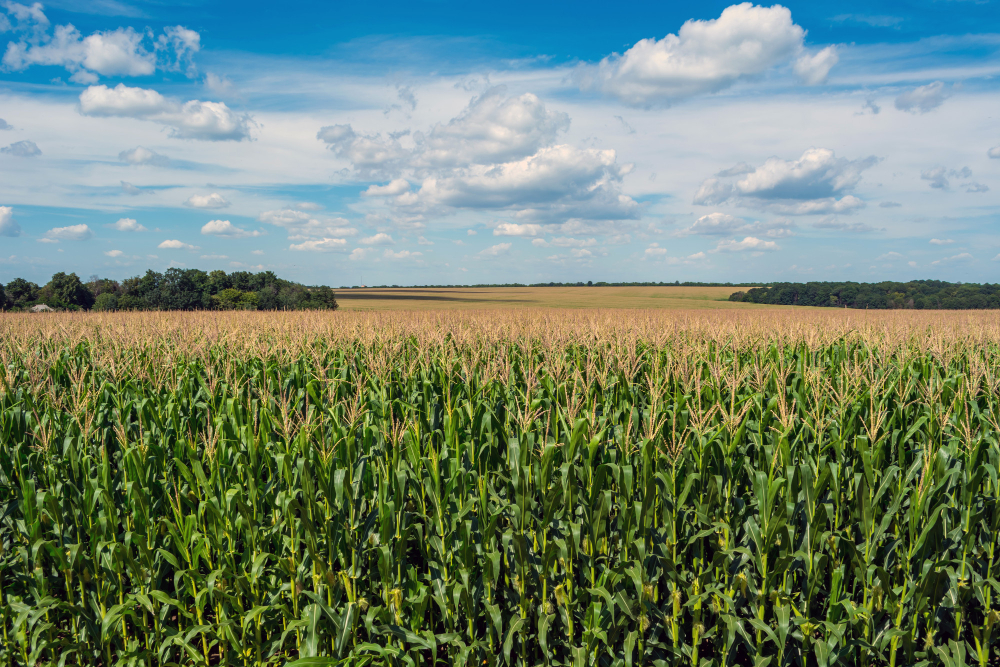
Crop rotation involves planting different crops in a particular field each season, rather than growing the same crop year after year. This practice helps to break pest cycles, reduce soil-borne diseases, and improve soil structure.
For example, legumes such as beans or peas can fix nitrogen from the air into their roots with the help of bacteria that live in nodules on their roots. When these plants are harvested or die back at the end of their life cycle they release this nitrogen into surrounding soils which benefits other plants grown there later.
In addition to improving soil health and reducing pests and diseases naturally without chemicals; rotating crops also increases yields by providing a more diverse range of nutrients for your garden’s ecosystem while minimizing plant stress caused by monoculture farming practices.
Legumes As Nitrogen Fixers

This process, known as nitrogen fixation, occurs in specialized structures called nodules on their roots. Legumes include beans, peas, lentils, alfalfa and clover.
By planting legumes in your garden or farm fields you can reduce your reliance on synthetic fertilizers while improving soil fertility. The symbiotic relationship between legume crops and rhizobia bacteria allows for an efficient transfer of nutrients from the atmosphere to the soil.
In addition to providing natural sources of nitrogen for other crops grown alongside them (known as companion planting), legume cover crops can also help suppress weeds and improve soil structure through their extensive root systems.
Bio-fertilizers
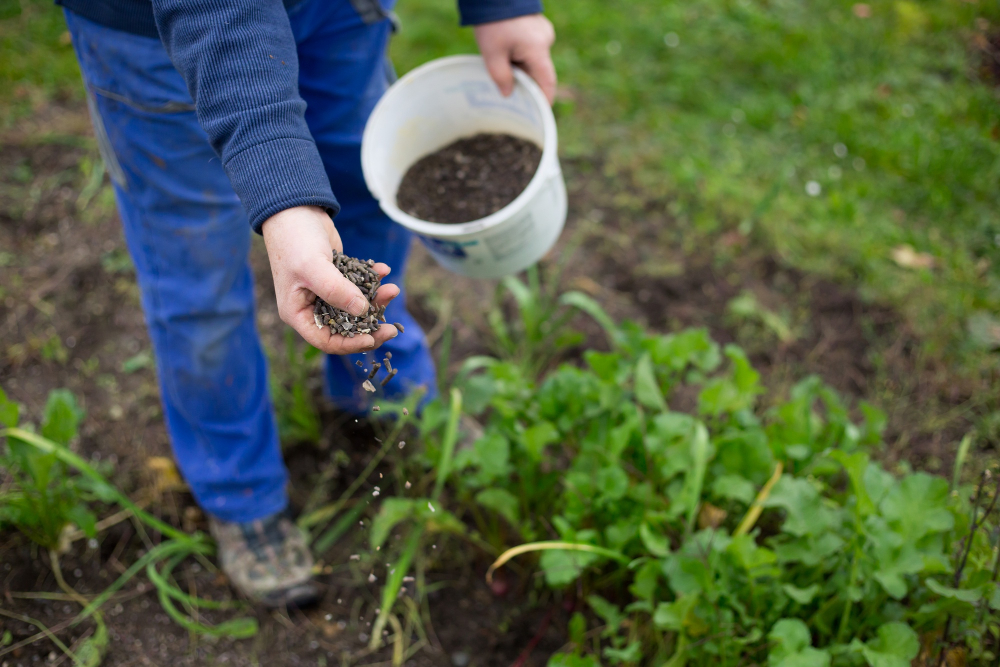
These fertilizers contain living microorganisms that help improve soil fertility by fixing nitrogen, solubilizing phosphorus, and producing growth-promoting substances. Bio-fertilizers can be used in various forms such as liquid or powder form and can be applied directly to the soil or sprayed on plant leaves.
One of the most popular types of bio-fertilizer is Rhizobium bacteria which helps leguminous plants like beans, peas, lentils etc., fix atmospheric nitrogen into a usable form for plants. Another type is Azotobacter which fixes atmospheric nitrogen in non-leguminous crops like wheat rice etc., while phosphate-solubilizing bacteria (PSB) convert insoluble phosphates into soluble ones that are easily absorbed by plants.
Using bio-fertilizers not only improves crop yield but also enhances soil health over time since it does not harm beneficial organisms present in the ecosystem unlike chemical fertilisers do. Additionally using these eco-friendly alternatives reduces environmental pollution caused due to excessive use of synthetic chemicals.
Mycorrhizal Fungi Interactions
These fungi help plants absorb nutrients and water from the soil, making them an excellent alternative to traditional fertilizers. Mycorrhizal fungi can also improve soil structure and increase resistance to diseases and pests.
To use mycorrhizal fungi in your garden, you can purchase inoculants containing spores of these beneficial microorganisms. Simply mix the inoculant with water or sprinkle it around the base of your plants before planting.
One important thing to note is that mycorrhizal interactions vary depending on plant species, so it’s essential to choose an inoculant specific for your crops’ needs. Some common types include endomycorrhiza (which penetrate root cells) and ectomycorrhiza (which form sheaths around roots).
Nitrogen-Fixing Bacteria
Nitrogen-fixing bacteria are a group of microorganisms that can convert atmospheric nitrogen into a form that plants can use. These beneficial bacteria live in symbiosis with leguminous plants such as beans, peas, and clover.
They colonize the roots of these plants and form nodules where they fix nitrogen from the air.
Using nitrogen-fixing bacteria is an excellent way to improve soil fertility without relying on synthetic fertilizers or animal manure. By planting legumes in your garden or farm fields, you can create a natural source of fertilizer that will benefit not only your crops but also other non-leguminous species growing nearby.
Moreover, some companies produce commercial inoculants containing specific strains of nitrogen-fixing bacteria to enhance their effectiveness when applied to seeds before planting them directly into the ground.
Phosphate-Solubilizing Bacteria
These microorganisms are capable of breaking down insoluble phosphates in the soil into soluble forms that can be easily absorbed by plants. This process not only improves plant growth but also reduces the need for chemical fertilizers, which can harm beneficial microbes in the soil.
Research has shown that phosphate-solubilizing bacteria have a positive impact on crop yield and quality, making them an excellent alternative to traditional fertilizers. They are easy to apply and cost-effective, making them ideal for small-scale farmers or home gardeners who want to improve their yields without spending a lot of money.
These bacteria help reduce environmental pollution caused by excessive use of chemical fertilizers since they do not contain harmful chemicals that could leach into water sources or cause other ecological problems.
Seaweed Extracts for Plant Growth
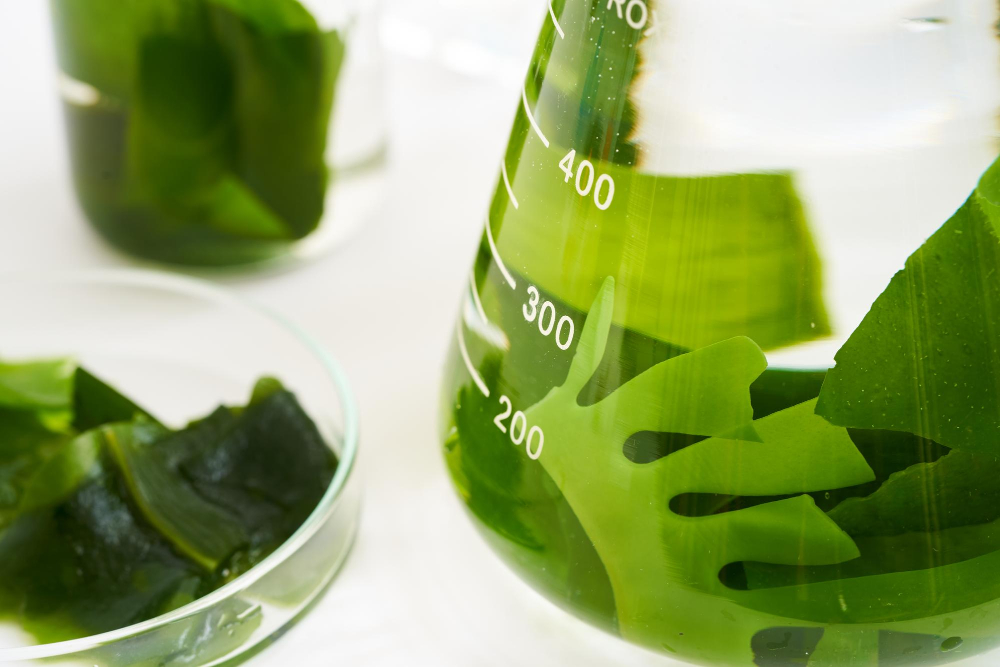
They contain high levels of essential nutrients such as nitrogen, potassium, and phosphorus that can help promote plant growth and improve soil health. Seaweed also contains trace elements like iron, zinc, manganese which are vital for the healthy development of plants.
In addition to its nutrient content, seaweed extract has been shown to enhance plant resistance against pests and diseases while improving their tolerance to environmental stressors such as drought or extreme temperatures. It is also known for stimulating root growth which helps plants absorb more water from the soil.
To use seaweed extract in your garden simply dilute it with water according to the manufacturer’s instructions before applying it directly onto your plants’ leaves or roots. You can also mix it into your compost pile or apply it directly onto the soil around your plants.
Fish Emulsion
It is made from the byproducts of fish processing, such as bones, scales, and guts. These parts are boiled down into a liquid concentrate that can be diluted with water before application.
One of the benefits of using fish emulsion as a fertilizer is its high nutrient content. It contains nitrogen, phosphorus, potassium, calcium and other trace elements that plants need to thrive.
Additionally it also provides beneficial microorganisms which help in breaking down soil nutrients making them more available for plants.
Another advantage of using fish emulsion over synthetic fertilizers is its slow-release nature which ensures steady supply throughout the growing season without burning your plants or causing any damage to their roots.
To use fish emulsion on your garden simply dilute it according to package instructions then apply directly onto soil around your plants or spray onto leaves if you prefer foliar feeding method.
Algae-based Products
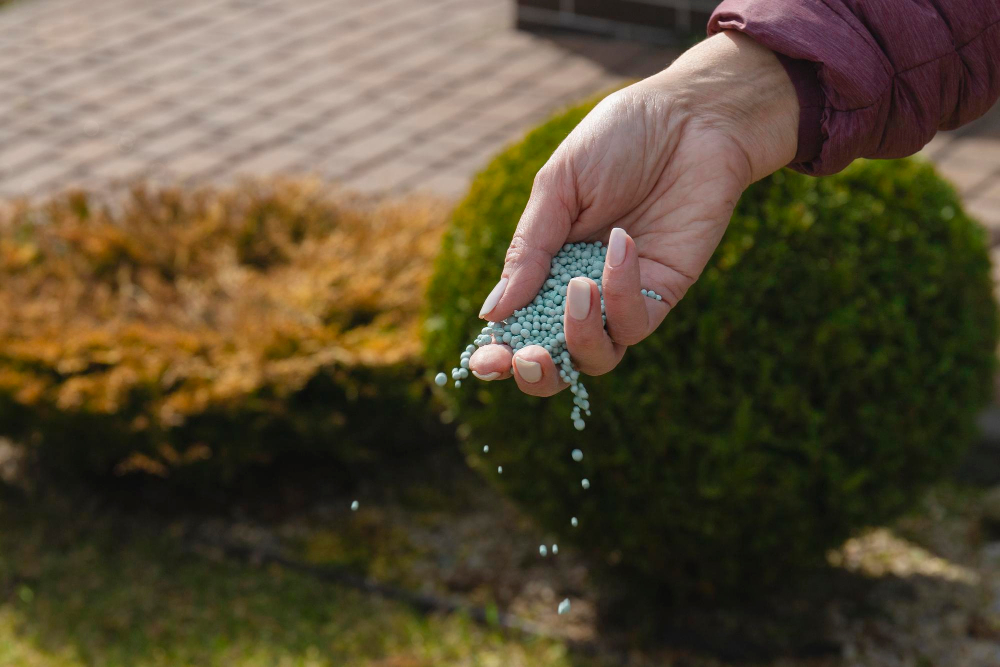
Algae contain high levels of nutrients such as nitrogen, phosphorus, and potassium that are essential for plant growth. They also have the added benefit of being rich in trace minerals and amino acids that can improve soil health.
One common algae-based product is seaweed extract, which is derived from various types of marine algae. Seaweed extracts come in liquid or powder form and can be used as a foliar spray or soil drench to promote root development, increase nutrient uptake, and enhance plant resistance to stress.
Another type of algae-based product is chlorella fertilizer made from freshwater green microalgae called Chlorella vulgaris. This fertilizer contains high levels of nitrogen (N), phosphorus (P), potassium (K) along with other micronutrients like iron (Fe) zinc(Zn).
It has been shown to improve crop yield by up 30% compared with conventional chemical fertilizers while reducing environmental pollution caused by excessive use chemicals.
Rock Dust As Soil Conditioner
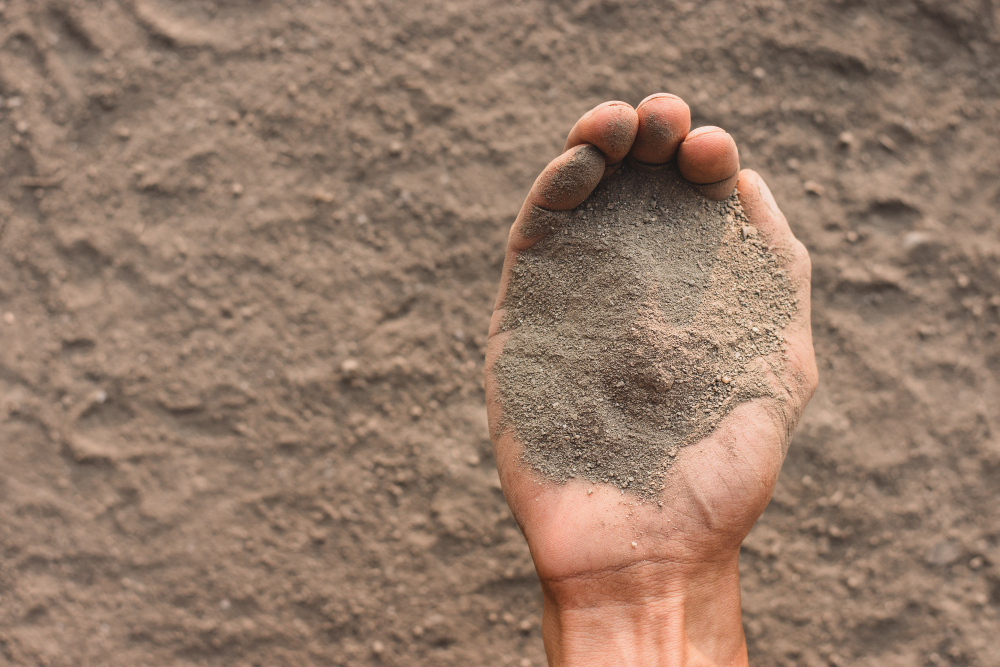
It is made from finely ground rock powder, which contains various nutrients such as calcium, magnesium, iron, and potassium. When added to the soil, rock dust can improve its structure and fertility by increasing microbial activity and enhancing nutrient uptake by plant roots.
One of the main benefits of using rock dust as a soil conditioner is that it helps restore depleted soils back to their natural state. Over time, intensive farming practices can deplete soils of essential minerals needed for healthy plant growth.
By adding rock dust to your garden beds or pots regularly you are replenishing these lost nutrients in an organic way.
Another advantage of using this type of fertilizer alternative is its ability to enhance crop yields while reducing pest problems naturally over time with consistent use.
Bone Meal
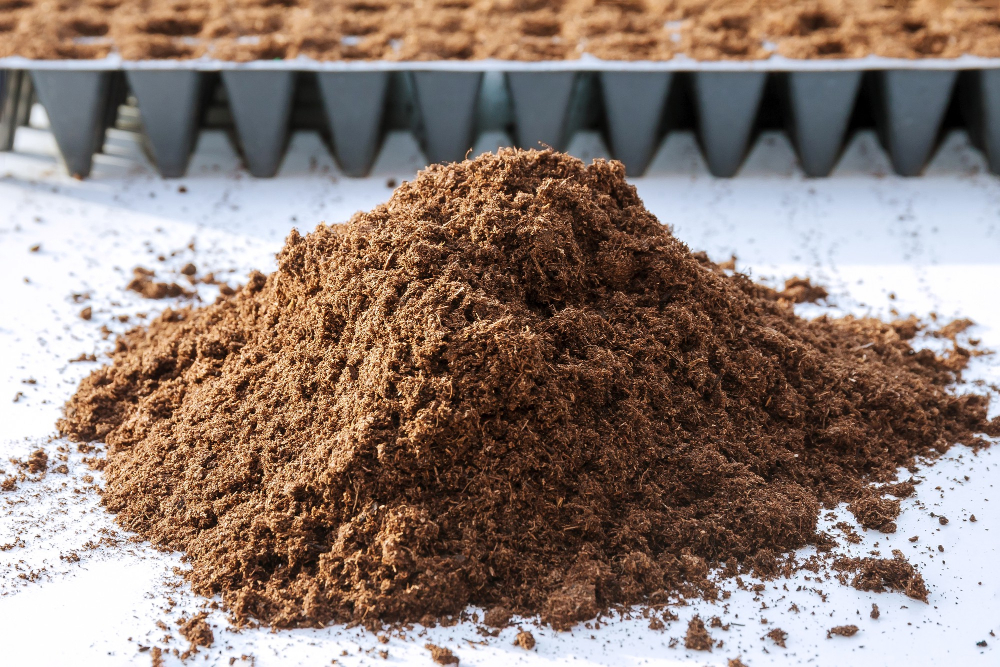
It is made from ground animal bones, which are rich in phosphorus, calcium, and other essential minerals. Bone meal can be an excellent alternative to chemical fertilizers as it provides slow-release nutrients that plants need over time.
To use bone meal as a fertilizer, simply sprinkle it around the base of your plants or mix it into the soil before planting. The slow-release nature of bone meal means that you won’t have to reapply frequently like with some synthetic fertilizers.
However, there are some things you should keep in mind when using bone meal. First off all avoid using too much because excessive amounts can lead to nutrient imbalances or even toxicity in your garden’s soil.
Also note that not all types of plants respond well with high levels of phosphorus so make sure you research what type(s) will benefit most from this kind of treatment.
Wood Ash
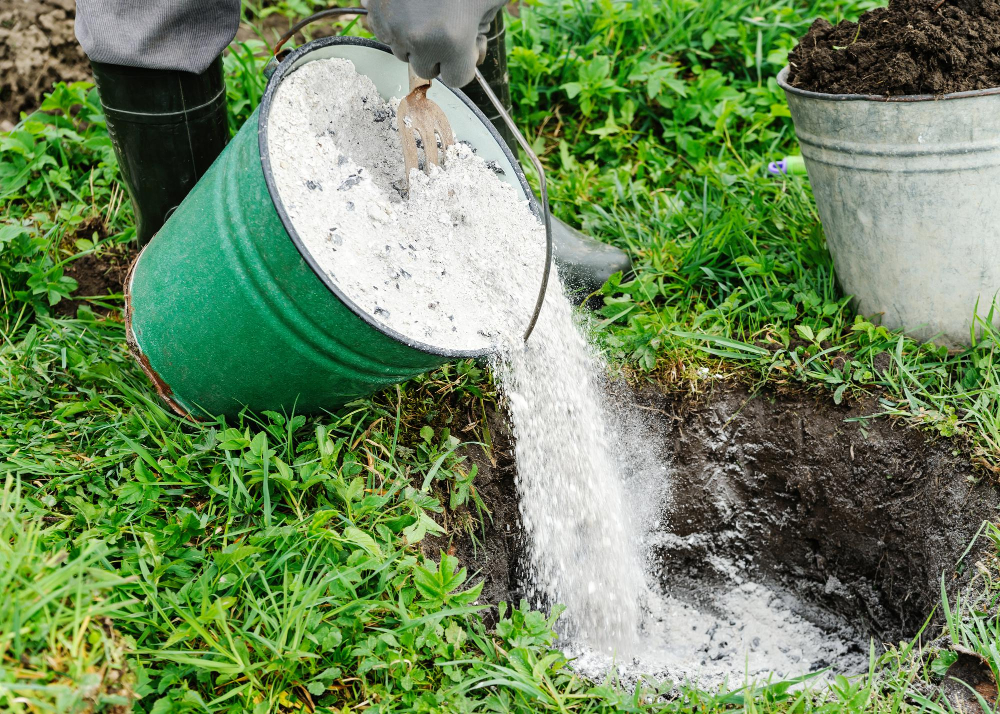
Wood ash contains potassium, calcium, magnesium, and other trace elements that are essential for plant growth. However, it’s important to note that not all wood ashes are created equal.
Hardwood ashes contain more nutrients than softwood ashes because they have higher levels of calcium and potassium.
To use wood ash as a fertilizer in your garden, sprinkle a thin layer over the soil surface or mix it into the topsoil before planting. Be careful not to apply too much as excessive amounts can raise the pH level of your soil which may harm some plants.
Additionally using too much wood ash could lead to nutrient imbalances in the soil so moderation is key when applying this type of fertilizer.
Organic Waste Recycling

Instead of throwing away food scraps, leaves, grass clippings, and other organic materials in the trash bin, you can turn them into valuable compost that nourishes your plants naturally. Composting not only reduces landfill waste but also helps retain moisture in the soil and promotes healthy microbial activity.
To start composting at home, all you need is a designated area for collecting organic matter (such as a bin or pile), some brown material like dried leaves or shredded paper to balance out the green material (food scraps), water to keep it moist but not soggy, and air circulation for proper decomposition. You can add worms (vermicomposting) or use natural accelerators such as coffee grounds or eggshells to speed up the process.
Integrated Nutrient Management
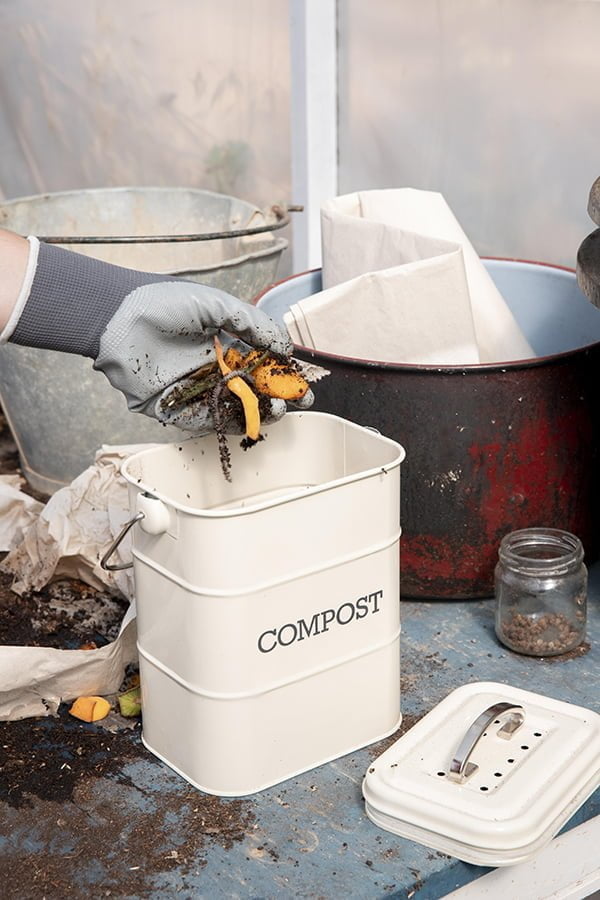
This method aims to optimize nutrient use efficiency, reduce environmental pollution, and improve crop productivity. INM involves the careful selection of fertilizers based on soil analysis, crop requirements, and local conditions.
It also emphasizes the use of organic inputs such as composts, manures or green manures along with chemical fertilizers.
By adopting an integrated approach to nutrient management in your garden or farm you can achieve better results while minimizing negative impacts on the environment. The key benefits include improved soil health through increased microbial activity; reduced greenhouse gas emissions from fertilizer production; lower costs due to efficient use of resources; enhanced biodiversity by promoting beneficial insects and microorganisms.
Integrated Nutrient Management is a sustainable way forward for farmers who want to maximize their yields without compromising long-term sustainability goals.
Sustainable Farming Practices
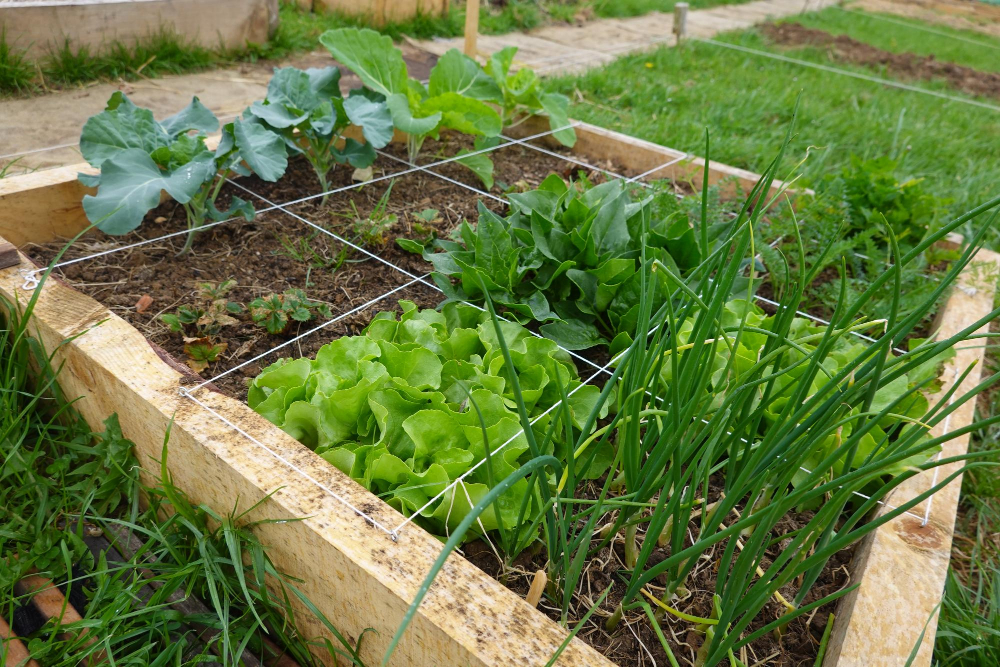
These methods focus on preserving the environment, reducing waste, and promoting biodiversity while still producing high-quality crops. By using techniques such as crop rotation, intercropping, and natural pest control methods like companion planting or beneficial insects release programs instead of chemical pesticides; sustainable farming can help reduce the use of synthetic fertilizers that harm soil health.
One example is agroforestry which combines trees with crops to create a more diverse ecosystem that benefits both plants and animals. This method helps to improve soil fertility by increasing organic matter content through leaf litter decomposition from trees while also providing shade for understory crops during hot summer months.
Another practice is conservation tillage where farmers leave crop residues on top of the soil after harvest instead of tilling them under which can lead to erosion problems in heavy rainfalls or windstorms later down the line if not managed properly over time.
By adopting these sustainable practices in your own garden or farm you will be able to produce healthy food without harming our planet’s resources!
FAQ
What is a low cost alternative to fertilizer?
A low-cost alternative to fertilizer is using homemade compost, compost tea, manure tea, vermicompost tea, epsom salts, fish tank water, fish emulsion, kelp meal, blood meal, bone meal, banana peels, wood ashes, and coffee grounds.
How can organic materials, such as compost and manure, be used as alternatives to synthetic fertilizers?
Organic materials, like compost and manure, can be utilized as alternatives to synthetic fertilizers by providing essential nutrients for plant growth, enhancing soil health, and promoting beneficial microbial activity in the soil.
What role do cover crops play in replacing the need for chemical fertilizers in agriculture?
Cover crops play a crucial role in reducing the dependency on chemical fertilizers in agriculture by enriching soil fertility through nitrogen fixation and preventing nutrient loss.
How does the practice of crop rotation contribute to maintaining soil fertility without the use of synthetic fertilizers?
Crop rotation contributes to maintaining soil fertility without synthetic fertilizers by alternating plant types to replenish depleted nutrients, prevent pest buildup, and reduce soil erosion.
Recap
Liked this article? Here's what you can read next:


